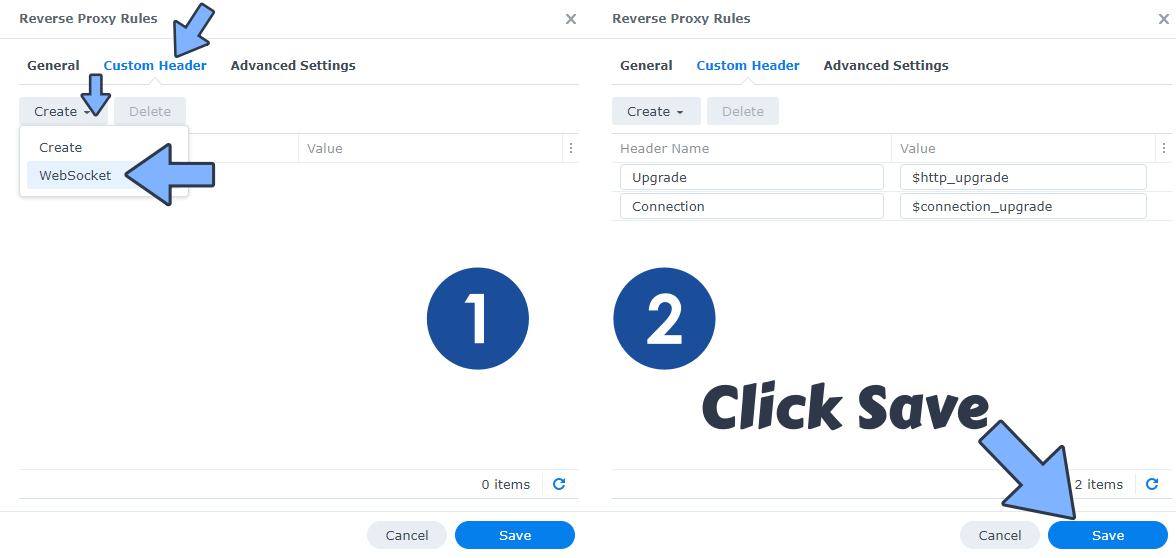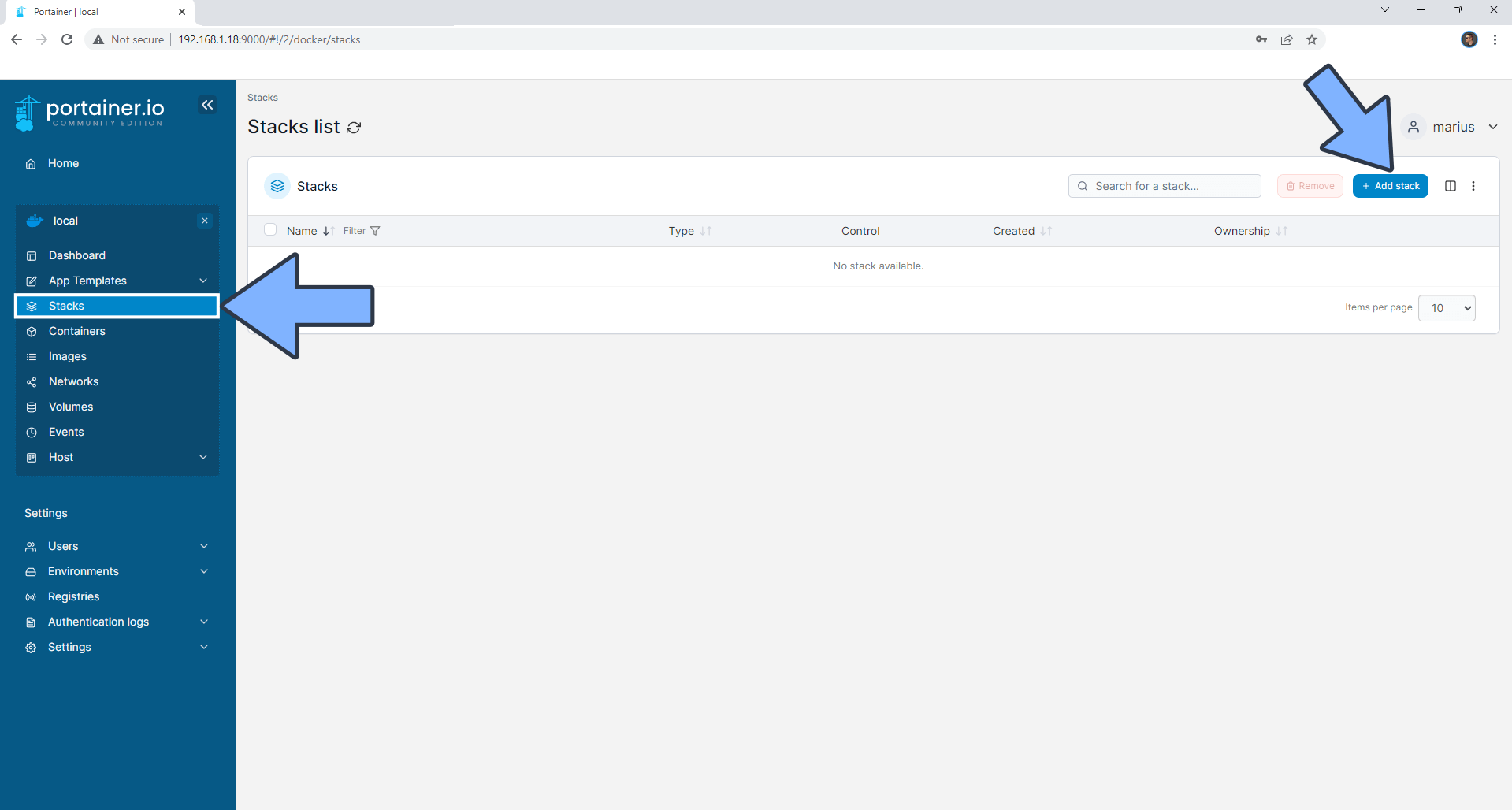![]()
My previous guide for SpeedTest Tracker involved the use of Task Scheduler. The image that uses the SQLite database is no longer working with the latest SpeedTest Tracker. To solve this issue, it’s mandatory to use SpeedTest Tracker with Postgres as its database following my guide below. Speedtest Tracker is a program that runs a speedtest check every hour and graphs the results in a fancy way. The back-end is written in Laravel and the front-end uses Filament. It uses Ookla’s Speedtest cli to get the data and uses Chart.js to plot the results. In this step by step guide I will show you how to install SpeedTest Tracker on your Synology NAS using Docker & Portainer.
STEP 1
Please Support My work by Making a Donation.
STEP 2
Install Portainer using my step by step guide. If you already have Portainer installed on your Synology NAS, skip this STEP. Attention: Make sure you have installed the latest Portainer version.
STEP 3
Make sure you have a synology.me Wildcard Certificate. Follow my guide to get a Wildcard Certificate. If you already have a synology.me Wildcard certificate, skip this STEP.
STEP 4
Go to Control Panel / Login Portal / Advanced Tab / click Reverse Proxy. Follow the instructions in the image below.
![]()
STEP 5
Now click the “Create” button. Follow the instructions in the image below.
![]()
STEP 6
After you click the Create button, the window below will open. Follow the instructions in the image below.
On the General area, set the Reverse Proxy Name description: type in Speedtest. After that, add the following instructions:
Source:
Protocol: HTTPS
Hostname: speedtest.yourname.synology.me
Port: 443
Check Enable HSTS
Destination:
Protocol: HTTP
Hostname: localhost
Port: 8999
![]()
STEP 7
On the Reverse Proxy Rules click the Custom Header tab. Click Create and then, from the drop-down menu, click WebSocket. After you click on WebSocket, two Header Names and two Values will be automatically added. Click Save. Follow the instructions in the image below.

STEP 8
Go to Control Panel / Network / Connectivity tab/ Check Enable HTTP/2 then click Apply. Follow the instructions in the image below.
![]()
STEP 9
Go to Control Panel / Security / Advanced tab/ Check Enable HTTP Compression then click Apply. Follow the instructions in the image below.
![]()
STEP 10
Go to File Station and open the docker folder. Inside the docker folder, create one new folder and name it speedtest. Follow the instructions in the image below.
Note: Be careful to enter only lowercase, not uppercase letters.
![]()
STEP 11
Now create two new folders inside the speedtest folder that you created at STEP 10 and name them config and db. Follow the instructions in the image below.
Note: Be careful to enter only lowercase, not uppercase letters.
![]()
STEP 12
Log into Portainer using your username and password. On the left sidebar in Portainer, click on Stacks then + Add stack. Follow the instructions in the image below.

STEP 13
In the Name field type in speedtest. Follow the instructions in the image below.
services:
db:
image: postgres:17
container_name: SpeedTest-TRACKER-DB
hostname: speedtestracker-db
mem_limit: 1g
cpu_shares: 1024
security_opt:
- no-new-privileges:true
healthcheck:
test: ["CMD", "pg_isready", "-q", "-d", "speedtest", "-U", "speedtestuser"]
timeout: 45s
interval: 10s
retries: 10
volumes:
- /volume1/docker/speedtest/db:/var/lib/postgresql/data:rw
environment:
POSTGRES_DB: speedtest
POSTGRES_USER: speedtestuser
POSTGRES_PASSWORD: speedtestpass
restart: on-failure:5
speedtest-tracker:
image: ghcr.io/linuxserver/speedtest-tracker:latest
container_name: SpeedTest-TRACKER
healthcheck:
test: curl -f http://localhost:80/ || exit 1
environment:
PUID: 1026
PGID: 100
APP_TIMEZONE: Europe/Bucharest
DISPLAY_TIMEZONE: Europe/Bucharest
APP_KEY: base64:Mk3oIhBicQx5NuTYpKcqNSRt4ANv+3nikg+z9yzWYrI= #docker exec speedtest-tracker php /app/www/artisan key:generate --show
DB_CONNECTION: pgsql
DB_HOST: speedtestracker-db
DB_PORT: 5432
DB_DATABASE: speedtest
DB_USERNAME: speedtestuser
DB_PASSWORD: speedtestpass
volumes:
- /volume1/docker/speedtest/config:/config:rw
ports:
- 8999:80
restart: on-failure:5
Note: Before you paste the code above in the Web editor area below, change the value numbers for PUID and PGID with your own values. (Follow my step by step guide on how to do this.)
Note: Before you paste the code above in the Web editor area below, change the value for APP_TIMEZONE. (Select your current Time Zone from this list.)
Note: Before you paste the code above in the Web editor area below, change the value for DISPLAY_TIMEZONE. (Select your current Time Zone from this list.)
Note: Before you paste the code above in the Web editor area below, change the value for APP_KEY. (Generate your own free APP KEY.)
![]()
STEP 14
Scroll down on the page until you see a button named Deploy the stack. Click on it. Follow the instructions in the image below. The installation process can take up to a few minutes. It will depend on your Internet speed connection.
![]()
STEP 15
If everything goes right, you will see the following message at the top right of your screen: “Success Stack successfully deployed“.
![]()
STEP 16
Go back to STEP 1 or you will deal with karma 🙂.
STEP 17
Now open your browser and type in your HTTPS/SSL certificate like this https://speedtest.yourname.synology.me/admin/login In my case it’s https://speedtest.mariushosting.synology.me/admin/login If everything goes right, you will see the Speedtest Sign in page. Type in the default Email address and Password, then click Sign in. Follow the instructions in the image below.
![]()
STEP 18
At the top right of the page, switch to dark mode. Follow the instructions in the image below.
![]()
STEP 19
Change the default Email address and Password with your own credentials. On the left sidebar click Users then the current Admin user.
![]()
STEP 20
Type in your own credentials then click Save changes. Follow the instructions in the image below.
![]()
STEP 21
You will be prompted to enter your new credentials that you have previously added at STEP 20. Click Sign in. Follow the instructions in the image below.
![]()
STEP 22
Start your first test. Click Run Speedtest at the top right of the Dashboard page, then Ookla speedtest. Follow the instructions in the image below.
![]()
STEP 23
Your SpeedTest Tracker dashboard at a glance!
![]()
STEP 24
Download (click on the blue link below) to download the SpeedTest Tracker Docker Compose stack with SPEEDTEST SCHEDULE integration. 🔒Note: Support my work to unlock the password. You can use this password to download any file on mariushosting forever!
Enjoy SpeedTest Tracker!
If you encounter issues by using this container, make sure to check out the Common Docker issues article.
Note: Can I run Docker on my Synology NAS? See the supported models.
Note: How to Back Up Docker Containers on your Synology NAS.
Note: Find out how to update the SpeedTest Tracker container with the latest image.
Note: How to Free Disk Space on Your NAS if You Run Docker.
Note: How to Schedule Start & Stop For Docker Containers.
Note: How to Activate Email Notifications.
Note: How to Add Access Control Profile on Your NAS.
Note: How to Change Docker Containers Restart Policy.
Note: How to Use Docker Containers With VPN.
Note: Convert Docker Run Into Docker Compose.
Note: How to Clean Docker.
Note: How to Clean Docker Automatically.
Note: Best Practices When Using Docker and DDNS.
Note: Some Docker Containers Need WebSocket.
Note: Find out the Best NAS Models For Docker.
Note: Activate Gmail SMTP For Docker Containers.
This post was updated on Sunday / October 13th, 2024 at 11:20 AM
